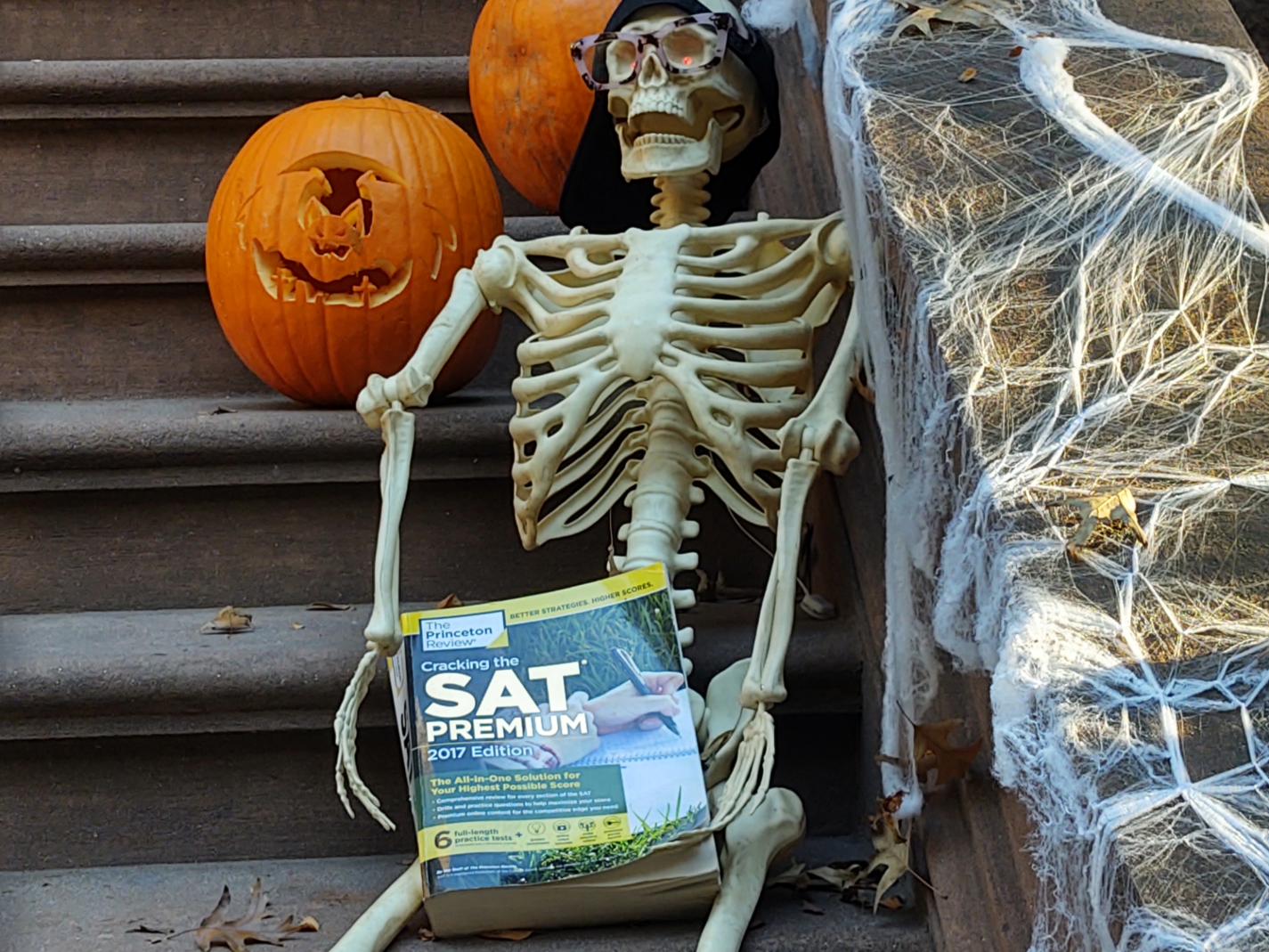
My street in the Upper West Side of New York City takes Halloween seriously. A week or more before the kids go trick-or-treating, our block features an abundance of ghoulishly carved pumpkins, life-sized plastic skeletons, and enough gauzy cobwebs to set the stage for a dozen Boris Karloff movies. My forays to the suburbs and exburbs also underscore that Halloween has become a major national holiday across the land. That’s a significant cultural change from the time when I was growing up, when the full extent of Halloween decoration was a grinning pumpkin on the doorstep, and the celebration was limited to one evening of pre-adolescents going door to door in bedsheets or other homemade costumes as the twilight descended.
Today, we entertain ourselves with much more elaborate manifestations of devilry. The well-degreed denizens who haunt the brownstones on my street know what truly terrifies the young folks. Here, for example, is a recumbent professor, desiccated due to too many long nights of study, luring the young with the promise of help with their SATs. The kinder roundabout has been warned to shun such treats, but can they help themselves? Do they realize that one taste may lead to an eternity of damnable indoctrination in Shoel of scholarship?
Fortunately, this fright will soon be over, and we can return to our ordinary worries over which political party can best wreck the country.
Picture by Peter Wood
There is a larger issue here — Halloween has replaced Christmas as the holiday celebrated by young adults.
One reason for is is the academic calendar that shortened the fall semester with finals before Christmas instead of after Christmas, with the mad end-of-semester rush eliminating time to celebrate the holiday. But that’s only part of it.
Let’s look at what was happening a century ago — Calvin Coolidge turned on the first White House Christmas Tree, paid for by the electric light industry. There were holiday balls from mid-December through New Year’s Eve, these were adult-oriented events. There were church services including a Midnight Christmas Eve services in Protestant as well as Catholic churches, the Protestant services being an additional one to the Sunday one. And young adults would go around and sing Christmas Carrolls.
One of my fondest childhood memories was being about 5 years old and pulled out of bed because my father’s high school students had come to sing Chistmas Carrolls and they sang “Jingle Bells’ just for me.
And the garish lighting of the 1950s & 1960s, houses outlined with multicolored C-9 bulbs (that aren’t even sold anymore) and towns stringing the same across streets in the business districts — that was a response to Depression poverty and wartime austerity, but there were neighborhood contests of who had the most decorations.
Halloween, by contrast, was for small children collecting candy and juvenile delinquents with eggs and shaving cream.
And while Christmas is generally considered to be a Christian holiday, it is more than that. Every culture I am aware of that evolved in the northern hemisphere has some sort of holiday involving bright lights within a couple weeks of the winter equinox. The Christmas Tree, the practice of bringing an evergreen tree into the house, is a Pagan fertility rite.
Christmas was (and is) about birth and life — ranging from the birth of Jesus to the days starting to get longer and the world being reborn in the spring. Halloween is about death and morbidity. It leans into Satanism — witchcraft and the rest. And the dead.
Hence we have replaced the celebration of life with the celebration of death.